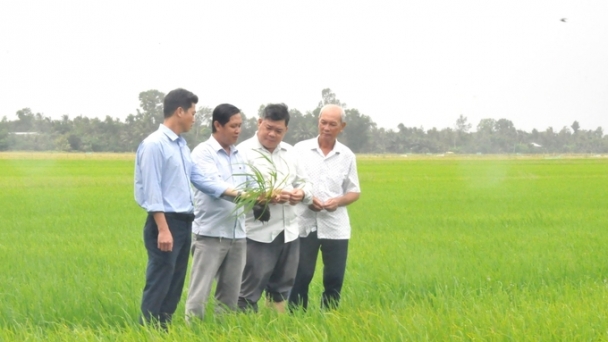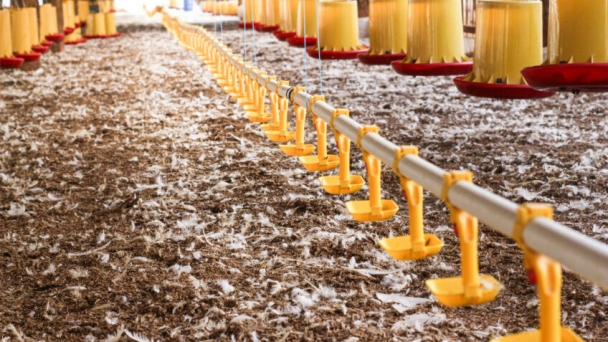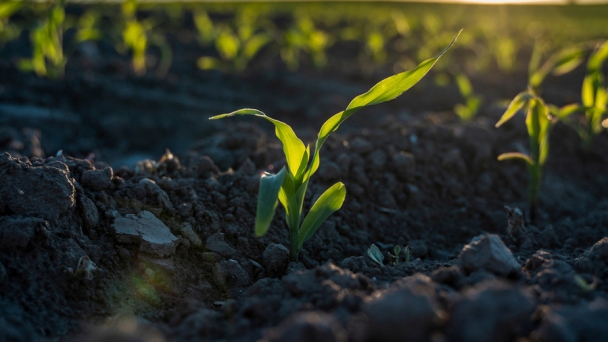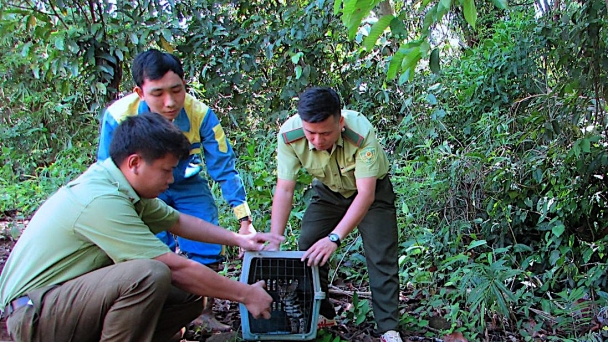November 3, 2024 | 01:27 GMT +7
November 3, 2024 | 01:27 GMT +7
Hotline: 0913.378.918
November 3, 2024 | 01:27 GMT +7
Hotline: 0913.378.918

Bidoup Nui Ba National Park has a typical natural landscape of the Di Linh plateau with vast pine hills, suitable for community tourism development. Photo: Tung Dinh.
On the afternoon of September 26, at Bidoup Nui Ba National Park (Lam Dong province), the United States Agency for International Development (USAID), Forestry Project Management Board, Department of Forestry (Ministry of Agriculture and Rural Development), World Wide Fund for Nature Vietnam (WWF-Vietnam) organized a seminar on the topic "Ecotourism development associated with biodiversity conservation."
Mr. Trieu Van Luc, Deputy Director of the Forestry Department, said that with a forest area of over 14.7 million hectares and a forest coverage rate of 42.2%, Vietnam's forests are home to tens of thousands of species of wild animals and plants. Forest ecosystems in Vietnam make a vast contribution to the economy and human welfare through their services.
Besides, forests are the living space for about 25 million people who depend on forests. Among them are mainly ethnic minority communities with cultural characteristics and national identities associated with forests. This has great potential to develop the multi-use values of the forest ecosystem.
Currently, forests and national parks... have been and are places to organize tourist activities, destinations to visit, experience, rest, sightsee, and observe wild flora and fauna. Thereby, it has created livelihoods for surrounding people, especially those in the "buffer zone", improving people's lives and ensuring security and order in that area.
Mr. John Kiely Beebe Harris, from USAID Vietnam, said that ecotourism could potentially build protected areas, creating a source of revenue for these forests and biodiversity conservation, along with providing a source of income for local communities.
In the coming time, developing ecotourism in Vietnam is very important because not only must it ensure that the benefits of ecotourism will benefit local communities, but it must also ensure that places There are national parks, places where ecotourism is developed, and conservation areas are constantly developed sustainably.
"Ecotourism is protecting nature, culture, protecting the future," Mr. John Kiely Beebe Harris shared at the conference.

Seminar on the topic "Ecotourism development associated with biodiversity conservation" at Bidoup Nui Ba National Park, afternoon of September 26. Photo: Thanh Chuong.
In addition, at the seminar, speakers said that Vietnam needs to consider having more appropriate policies, strategies, and approaches to promote the diversification of forms of providing forest ecosystem services. Or it can be said to diversify forest benefits for human life, thereby helping each person understand and appreciate forests more, joining hands to protect forests and conserve nature and biodiversity in Vietnam.
Bidoup Nui Ba National Park was established in 2004 and is named after the two highest peaks of the Langbiang plateau: Bidoup (2,287m) and Nui Ba (2,167m). With a total area of 70,038 ha, the park ranks as one of Vietnam's five largest national parks. In 2015, Bidoup Nui Ba National Park was a reserve recognized by UNESCO.
The goals and tasks of Bidoup Nui Ba National Park are as follows:
Conserve forest ecosystems in subtropical climate zones, high mountains and endemic and rare forest flora and fauna species; linked with adjacent national parks and nature reserves to form a large natural area, contributing to biological conservation in the Da Lat Plateau, the Southern Central Highlands and the South Central region.
Contributing to water source protection for the Dong Nai river system and downstream reservoirs to serve the socio-economic activities of Lam Dong Province, the Southern Central Highlands, the Southeast and the extreme South Central Coast set.
Preserving primeval forest habitats to embellish and develop the urban architecture of Da Lat city, preserve indigenous cultural characteristics of Da Lat city's roots, and serve scientific research. and educate about tropical forests, develop eco-tourism and contribute to strengthening national security and defense of Lam Dong Province and the Central Highlands.
The country has established 167 special-use forests, including 34 national parks, 56 nature reserves, 14 species/habitat conservation areas, 54 landscape protection areas, and scientific research and experiment forests belonging to 9 scientific units...
In addition to the richness of natural resources, biodiversity, and majestic landscapes associated with cultural and spiritual values and environmental protection, Vietnam's special-use forest system also has the potential to develop the importance of forest ecosystem services, especially developing ecotourism.
Translated by Tuan Huy
/2024/11/02/5632-0-094944_135.jpg)
(VAN) The project to develop 1 million hectares of high-quality rice is not only a breakthrough in the agricultural sector but also brings many opportunities for farmers in Dong Thap.

(VAN) Community agricultural extension is a vital link that connects businesses with farmer organizations in the development of a sustainable rice value chain.

(VAN) Cluster sowing machines promotes labor productivity and enhances biological yield, effectively supporting the project to develop one million hectares of high-quality rice in the Mekong Delta.

(VAN) Opportunities to reduce greenhouse gas emissions, provide eco-energy and provide income for producers were highlighted at this year’s International Egg Commission (IEC) annual conference.

(VAN) Researchers across MIT are working on ways to boost food production and help crops survive drought.

(VAN) Wildlife is a crucial component of ecosystem, affecting present and future lives. However, it faces serious threats from human activities.
/2024/10/31/0725-0-160158_222.jpg)
(VAN) Lotus is one of the five key industries in Dong Thap's agricultural restructuring project and is being developed in the direction of reducing costs and improving quality.